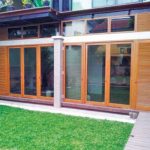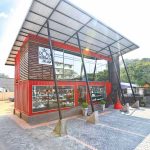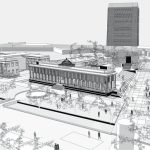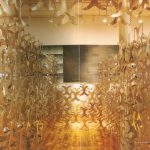-
One with Nature Jungle Beach Resort
April 2013
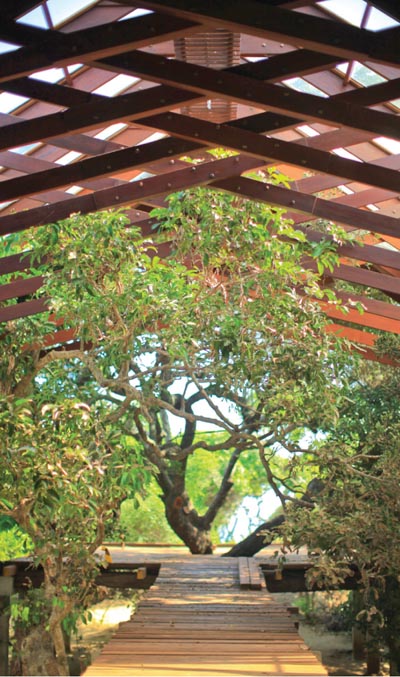 Jungle Beach Resort is a unique Resort on the East Coast which drew its entire concept and character from its physical context. Located in the Tourism Development Zone in Kuchchaveli, Trincomalee this 48 key Resort was a design-built project by International Construction Consortium with Studio ViVeGe as the Architects (This project was the 3rd resort property designed for Uga Escapes by the architect).
Jungle Beach Resort is a unique Resort on the East Coast which drew its entire concept and character from its physical context. Located in the Tourism Development Zone in Kuchchaveli, Trincomalee this 48 key Resort was a design-built project by International Construction Consortium with Studio ViVeGe as the Architects (This project was the 3rd resort property designed for Uga Escapes by the architect).
By Manori Wijesekera
Photography Tristan Laurens Bernard of TLB Photography
The 10 acre site was carefully selected after an aerial viewing. “We selected a stretch that had maximum beach front as well as a view of the lagoon over the access road,” said Archt Darnie Rajapaksa, Principal Designer and Architect on the project. This was an important selling point for the Resort, offering guests both sunrise and sunset views.
There was no pre-conceived design concept and the very essence and concept came to being as the architectural team first visited the site. “The site is highly dense, with medium sized canopied trees, and no undergrowth. When you look at the site from the beach and the access road and lagoon, it’s a very bushy and dense growth. So we decided to keep that character,” said Archt Rajapaksa.
Their first action was to carry out a survey of the trees on site and number them. “Once we saw how many trees there were, and how it created the character of this space, we decided that we would not cut down even one tree and would build the resort around them,” said Archt Rajapaksa. The Resort was built without a single one of the 180 trees being cut down, and only the undergrowth and shrubs being cleared where necessary.
“Since the client had already decided they wanted the rooms built as individual chalets, we were able to pick and choose the cleared areas for the chalets,” said Archt Rajapaksa. Although the layout for chalets had been done in advance, for approvals by the Scoping Committee at SLTDA, these plans had to be changed to accommodate the new placement of chalets amongst the trees. The design team also had to keep in mind maximising the views available. Unlike most beach resorts, Jungle Beach does not provide a wide expanse of unobstructed ocean views. Rather, the views of the beach or the lagoon are framed between trees or branches. This creates an aura of seclusion and being totally immersed in nature. And from this concept arose the name, Jungle Beach.
“We had to minimise the size of the chalets, to get into a standard size,” explained Archt Rajapaksa. The placing of some of the operational areas had to be reduced and all staff quarters could not be accommodated within the new site plan. “The client opted to rent staff accommodation elsewhere, and since most of the staff were hired locally, this was a minimal requirement,” she added.
The built areas are all designed to blend in with the environment, and in keeping with the green concepts and ethos of the client. “When I saw the site, I didn’t want to make the roofs very visible or prominent,” recalls Archt Rajapaksa. “I wanted it to have the same profile of the trees affected by wind, keep the same vegetation line into the roof. When you look at the Resort from the beach, you don’t see the roof so much as the jungle, and that’s the effect we wanted.”
In an unusual design process, the team started designing the buildings, from the roof downwards. The roofs are covered in large tiles made of bunches of dried iluk.
In another first for the team, they built the entire structure of the chalets using Durra board, an eco-friendly, 100% sustainable board using it as a structural component. “The entire structure of all chalets, public areas and back of house areas are made from Durra board, the ceilings, the walls – everything,” said Archt Rajapaksa. The Durra structure was built on pre-cast, raised platforms and at each point where the Durra boards met at the roof, the team placed a timber truss and these soon formed a design pattern of their own, lending a distinctive aesthetic to the interiors. The roof structure then was supported on double panel Durra walls which acted as structural walls without columns or beams.
The design team spent the first few weeks experimenting with the Durra board structure until it met all requirements structurally and aesthetically. A three feet wide path was created during construction which was the pathway for transport of all construction material as well as the walkway to the chalets. All the piping and wiring were laid on this path so that no other areas would be disturbed.
The construction process was meticulously planned so as to make a minimum impact to the environment. Almost all masonry components were pre-cast and manually handled. “All structural components were broken down to manually movable sizes that could be assembled at the site and brought to the site in a carefully planned way,” said Archt Rajapaksa.
The construction process was meticulously planned so as to make a minimum impact to the environment
The Resort’s public areas are built keeping with the overall natural design. A simple, rustic podium is the reception area, and visitors walk up a timbered ramp and go up to the first level with a deck area from which scintillating, framed views of the ocean are glimpsed. This level has the lounge and the signature dining area which is a timber deck around the largest tree on the site. One level down is the bar and the pool area and the dining area is at this level as well. Interiors are designed simply to blend in with the structural elements and natural environment.
All the public areas and several of the chalets are accessibility-friendly, and salvaged timber has been re-used in the ramp and elsewhere, ensuring this Resort is truly “green”.
The design team were able to create two sets of “Cluster Chalets,” three chalets built close together with a private fenced off area and with a large, personal plunge pool. The 48 chalets are positioned in three areas, with a beach view, lagoon view or jungle view. The lagoon view chalets are two-storied, allowing a loft area from which the lagoon and sunset can be best viewed.
Visitors to Jungle Beach will be hard pressed to define where nature ends and man’s work begins. It’s very essence is to blend in and complement its surroundings – no mean feat, when considering the challenging circumstances and terrain. “I like working with a framework of a physical context because I believe a design is sustainable and successful functionally and aesthetically when you blend in the physical context into the design. And at Jungle Beach, there was this overwhelming character in the physical context. We did not have to impose anything or bring in any design elements from outside,” explained Archt Rajapaksa.
Architectural Firm: Studio ViVeGe
Principal Architect: Darnie Rajapaksa
Other Consultants: CC Design Office
Site Area: 436,000 sq ft (10 acres)
Built Area: 55,564 sq ft Completion: 20th May, 2012
Project Period: 12 months
Contractor: International Construction Consortium
Client: Uga Escapes









